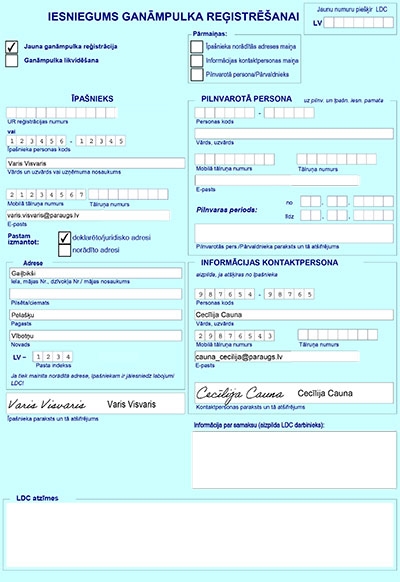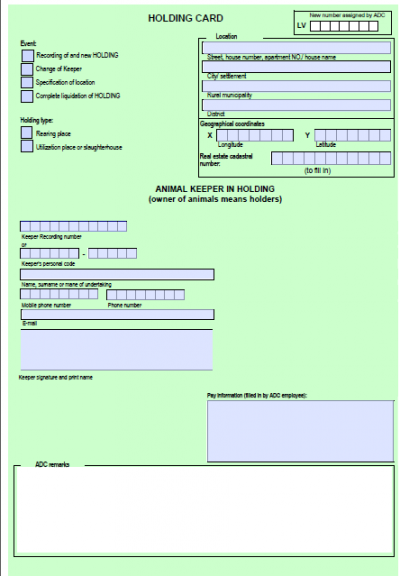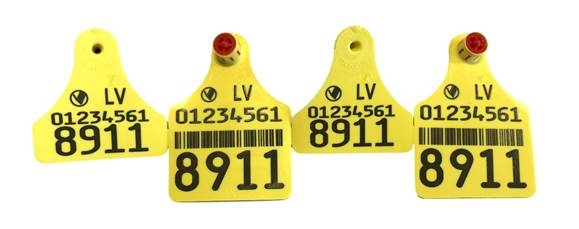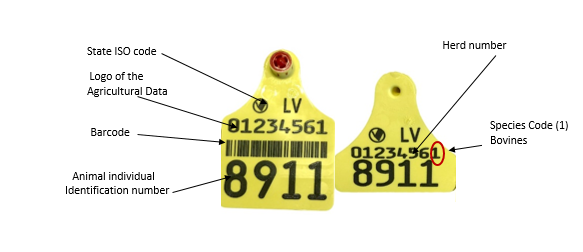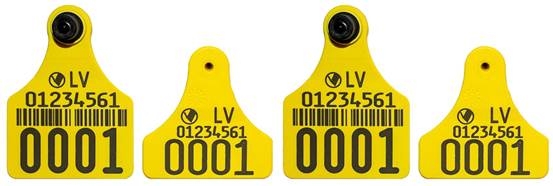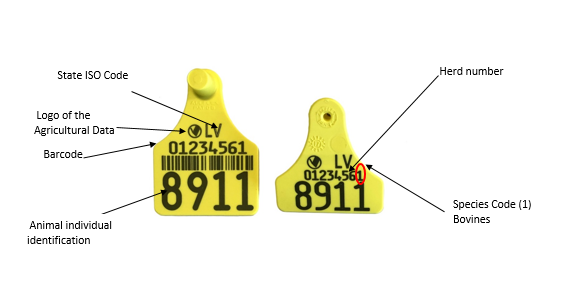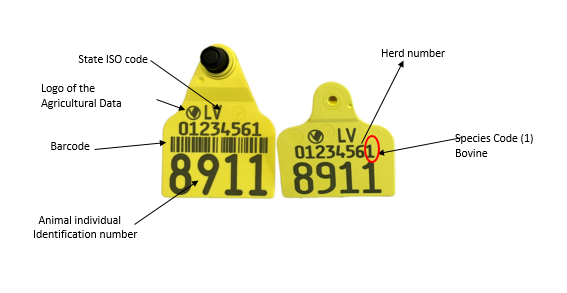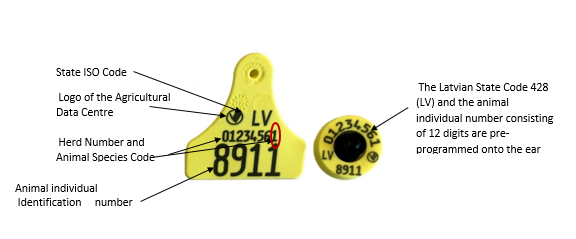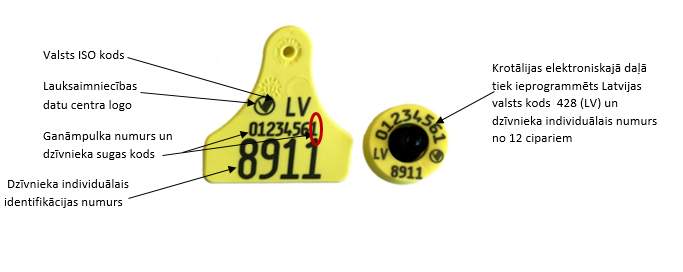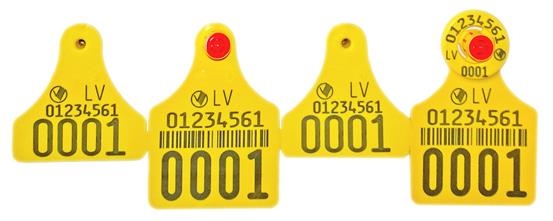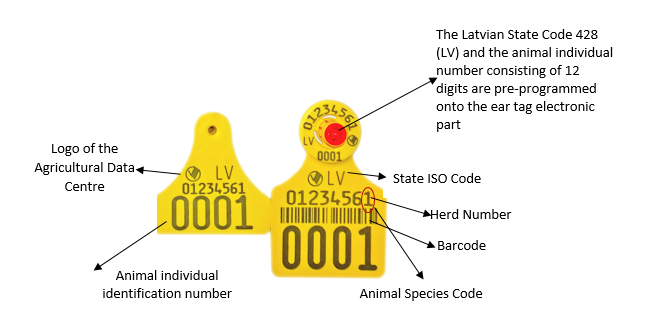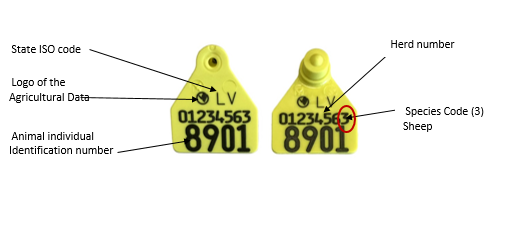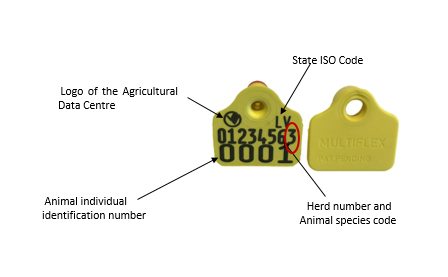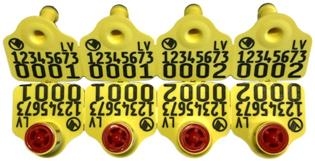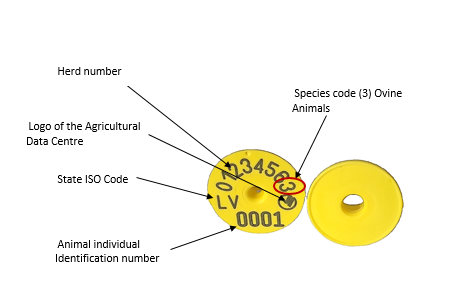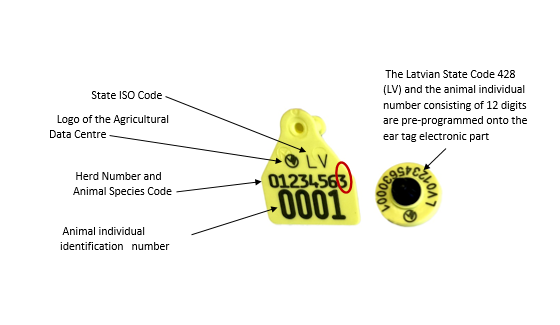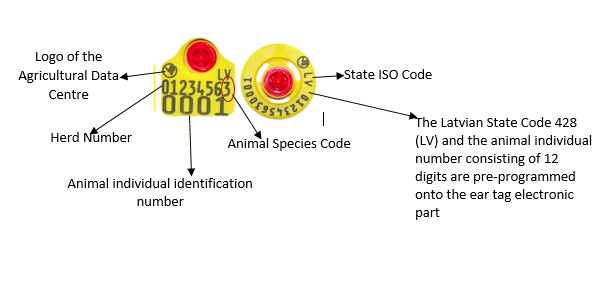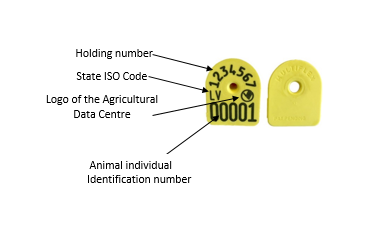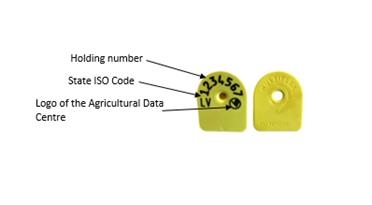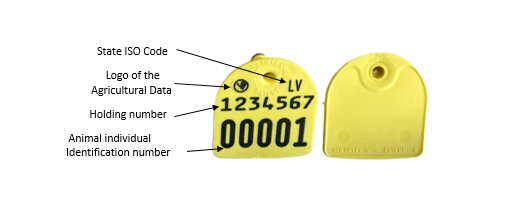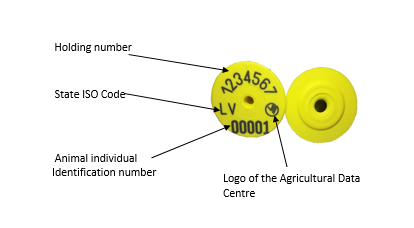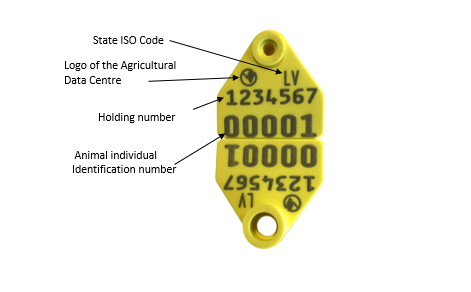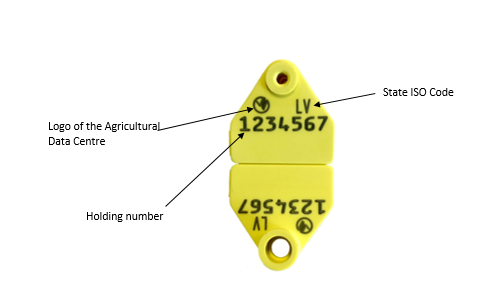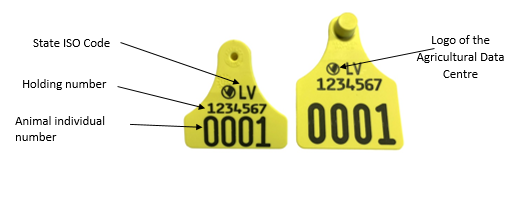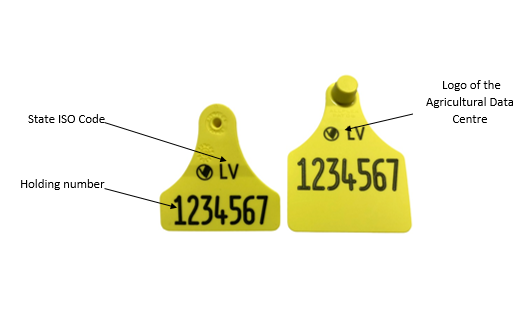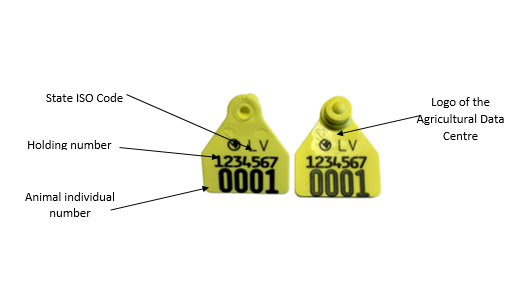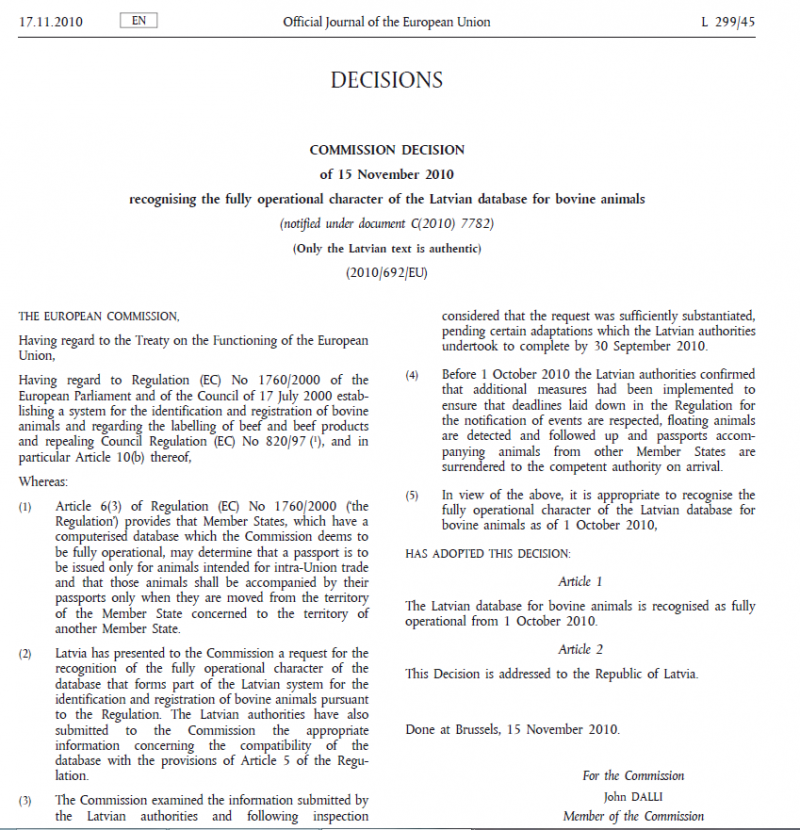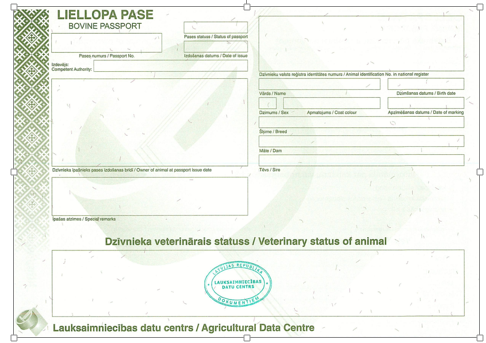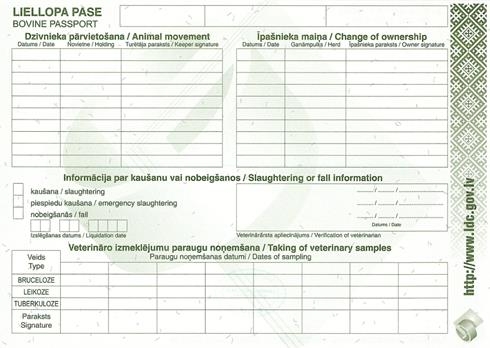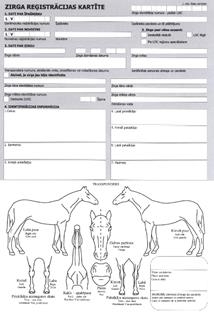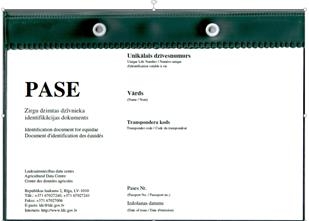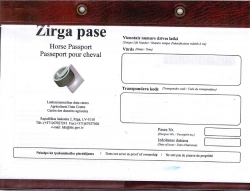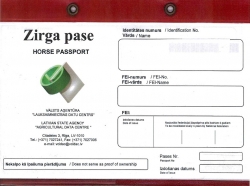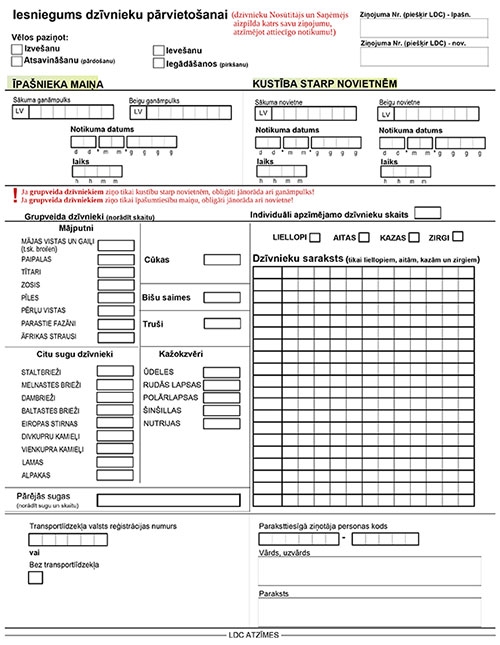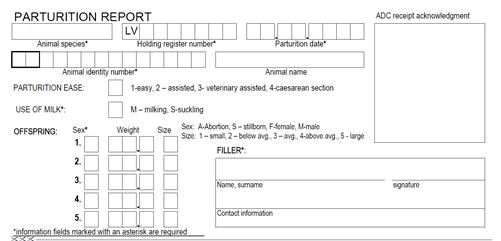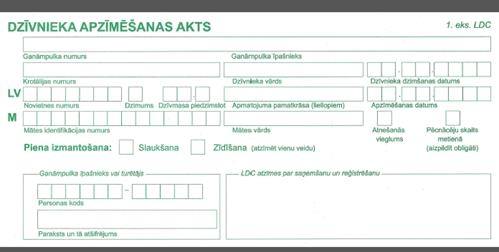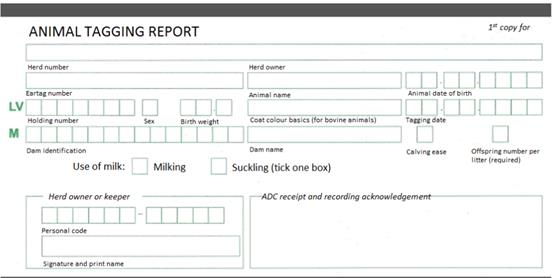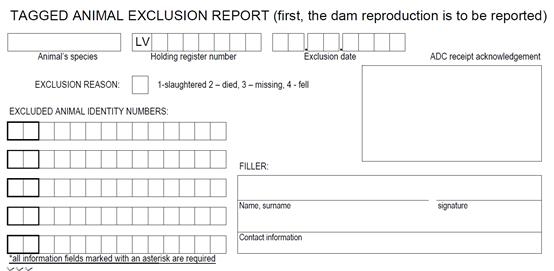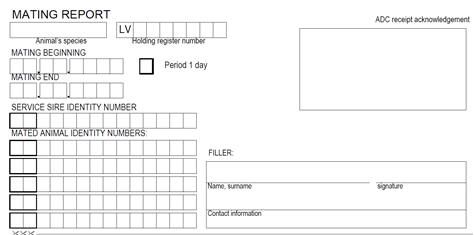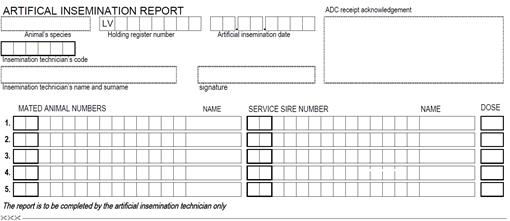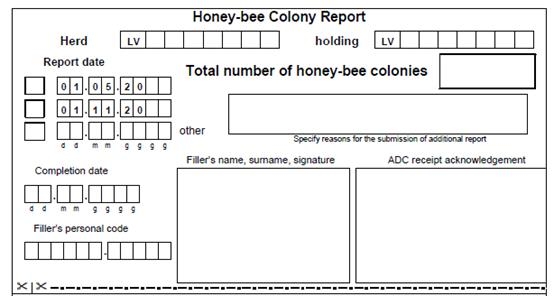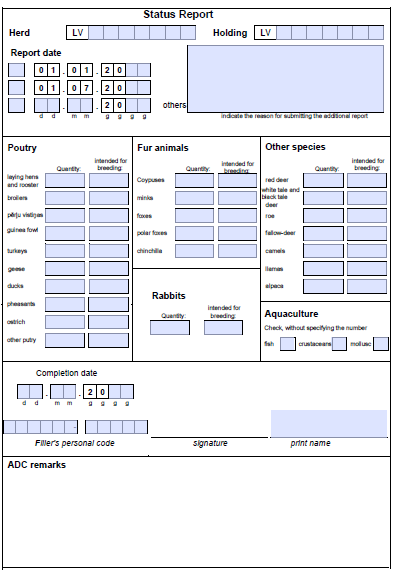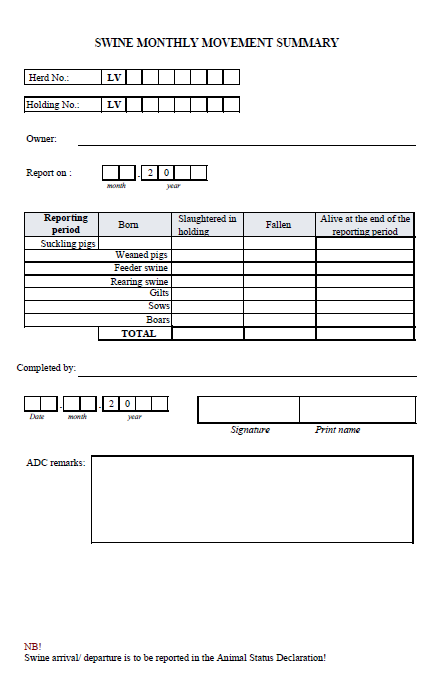Elaboration of Statutory Enactments
Ministry of Agriculture of the Republic of Latvia
Agriculture Department
Republikas laukums 2, Riga, LV-1010
Website: www.zm.gov.lv
Contacts:
Gita Jansone,
Head of Animal Husbandry and Pedigree Breeding Division
E-mail: gita.jansone@zm.gov.lv
Phone: +371 28624214
Ineta Lavrinoviča,
Deputy Head of Division
E-mail: ineta.lavrinovica@zm.gov.lv
Phone: +371 67027528
Implementation and Administration of Statutory Enactments
Agricultural Data Centre
Republikas laukums 2, Riga, LV-1010
Phone: +371 67027041
E-mail: ldc@ldc.gov.lv
Website: www.ldc.gov.lv
Contact:
Erna Galvanovska,
Deputy Director
E-mail: erna.galvanovska@ldc.gov.lv
Phone: +371 67095051
Herd means a group of livestock or agricultural animals or a farm of aquaculture animals that belongs to one owner.
Herd number is to be recorded in the Information System of the Agricultural Data Centre, a herd is assigned LV (Latvian State Acronym (abbreviation)) LV0+6 digits from the database (E.g.: LV 1234567)
Owner means any natural person or legal entity, which owns an agricultural animal or aquaculture farm and who has declared the place of residence in Latvia and has been recorded in PMLP (Office of Citizenship and Migration Affairs) or UR (Register of Enterprises).
To record a herd a natural person or legal entity is to submit to the Agricultural Data Centre a completed Herd Card / (Fig. No. 1). The herd is recorded in the database within 3 days from receipt of the Herd Card and of payment.
Fig. No. 1
Holding means any premises, structure or outdoor restricted environment or a place, where livestock or aquaculture animals are held permanently or temporarily and which forms a single epidemiological unit.
Keeper means a natural person or legal entity, which permanently or temporarily is held responsible for livestock or for aquaculture animals.
Each holding is to be recorded in ADC IC (Agricultural Data Centre Information System), the holding is assigned a number LV1+6 digits from the database (e.g., LV1123456) or another code depending on the Holding operation type (1- Rearing place; 2-Utilisation place or slaughterhouse; 3- Exhibition, competition; 4- Separate pastures; 5- Trading venue; 6-Recreation area; 7-Border post; 8- Quarantine site)
Prior to commencing holding livestock, the Herd and Holding must be recorded. For one herd several holdings can be recorded.
To record holding a natural person or legal entity is to submit Novietnes kartīte /a Holding Card (Fig.No.2) to the Agricultural Data Centre. The Holding is recorded in the database within 3 days from receipt of the Holding Card and of payment.
Fig. No. 2.
Agriculture Data Centre is competent authority of Republic of Latvia the means of animal identification producing and issuing according with:
Commission Delegated Regulation (EU) 2019/2035 of 28 June 2019 supplementing Regulation (EU) 2016/429 of the European Parliament and of the Council as regards rules for establishments keeping terrestrial animals and hatcheries, and the traceability of certain kept terrestrial animals and hatching eggs (Text with EEA relevance)
To identify bovine animals the yellow plastic eartags are used, which satisfy and are approved in compliance with the ISO (International Standartization Organization) and ICAR (International Committee for Animal Recording) standard requirments.
The State code, logo of the Agricultural Data Centre and a unique number of each animal from the database are printed on the eartag; the number consists of 12 digits.
An eartag consists of two pieces, one piece is inserted in the animal’s ear from the front, the second – from the back. The front piece is larger, there additionally the barcode is printed, which contains the animal identification individual number.
Information on an eartag is printed in three lines on the back piece. Animals are tagged by inserting one eartag pair in each ear.At the Fig. below the eartag number is to be read as follows: “LV012345618911”.
In Latvia has approved three companies types of eartags to identify bovine animals:
1. Caisley International GmbH
2. ALLFLEX EUROPE
3. DATAMARS
1. CAISLEY bovine eartag, a set:
CAISLEY bovine eartag, description:
2. ALLFLEX bovine eartag, a set:
ALLFLEX bovine eartag, description:
4. DATAMARS bovine eartag, a set
DATAMARS bovine eartag, description:
The electronic bovine eartags are yellow, manufactured from ptastics, which satisfy and are approved in compliance with the ISO11784/11785 F-DX (International Standartization Organization) and ICAR (International Committee for Animal Recording) standard requirments.
The State ISO code (with recorded State code 4428), logo of the Agricultural Data Centre and a unique number of each animal from the database are printed on the eartag; the number consists of 12 digits. On the upper round part of the electronic eartags the State ISO code, logo of the Agricultural Data Centre and the animal unique number are repatedly printed. The Latvian State code 428 and the animal identification number are pre-programmed onto the electronic part of the eartag. Thus, the part of an eartag seen on the Fig. shall be read as “428012345618911”.
Information on eartags is printed in four lines on the front piece of the eartag and in three lines on the back piece. Animals are tagged by inserting one eartag pair in each ear. An electronic eartag is inserted only in one ear. On the below Fig. the bovine number shall be read as “LV012345618911”.
In Latvia has approved two companies types of EID ( electronic) tags to identify bovine animals: Allflex and Caisley
ALLFLEX electronic bovine ear tags – females (female side – electronic) and males (male side - visual), a set:
ALLFLEX electronic bovine ear tags, description:
ALLFLEX electronic bovine ear tags (FDX electronic round + M visual)
For round electronic ear tags (FDX without visual part) no barcode is used, therefore, the ear tag bears just the Latvian State ISO code, logo of the Agricultural Data Centre and the animal identification number. The Latvian State code 428 and the animal identification number are pre-programmed onto the electronic part of the eartag.
Caisley electronic bovine ear tags – females (female side – electronic) and males (male side - visual), a set:
Caisley electronic bovine ear tags
The Latvian State code 428 and the animal identification number are pre-programmed onto the electronic part of the eartag.
For ovine and caprine animals the plastic ear tags of different colours are used, which can come in standard shape yellow, orange, green or white or yellow round. The ovine ear tags satisfy and are approved in compliance with the ISO (International Standartization Organization) and ICAR (International Committee for Animal Recording) standard requirments.
Identical information is printed on both pieces of an ear tag with the logo of the Agricultural Data Centre and Latvian State Code printed in the first line. The animal individual number consisting of 12 digits is printed in the second and third lines. Both pieces of an ear tag in terms of sizes do not differ.
In Latvia has approved two companies types of ear tags to identify Ovine, Caprine animals:
1. ALLFLEX ovine ear tags, a set:
ALLFLEX ear tags, description:
Round Allflex ear tags are printed on one side, which is inserted onto the front side of the animal’s ear. The animal individual number, Latvian State code, logo of the Agricultural Data Centre is printed in the ear tag semicircle.
2. ALLFLEX round ear tags, a set:
ALLFLEX round ear tags, description:
3. CAISLEY ovine ear tags, a set:
CAISLEY ear tags, description:
4. CAISLEY ovine eartags, a new sample set:
CAISLEY ovine eartags, a new sample description:
Round CAISLEY ear tags are printed on one side. The animal individual number, Latvian State ISO code and logo of the Agricultural Data Centre are printed in the ear tag semicircle.
5. CAISLEY round ovine eartags, a set and description:
CAISLEY round ovine ear tags, description:
The electronic ovine, caprine ear tags are yellow, produced from plastics. The Latvian State ISO code, logo of the Agricultural Data Centre and animal individual number consisting of 12 digits is printed on each ear tag. The Latvian State ISO code, logo of the Agricultural Data Centre and animal individual number is printed on the ear tag electronic side, all elements are positioned in semicircle around the ear tag electronic side. Electronic eartags satisfy and are approved in compliance with the ISO ISO11784/11785 F-DX (International Standartization Organization) and ICAR (International Committee for Animal Recording) standard requirments.
The eartag electronic side is pre-programmed with the Latvian State code 428 and animal idenitification number. The eartage seen on the Fig. thereby would be read as “428012345638901”. An electronic eartag is inserted only onto one ear, a custom eartag is inserted onto the second ear. Information is printed on eartags in three lines.
In Latvia has approved two companies types of eartags EID ( electronic) tags to identify ovine animals:
In Latvia ALLFLEX EUROPE and Caisley ear tags are used for ovine electronic tagging.
1. ALLFLEX electronic eartags for small ruminants, a set:
ALLFLEX electronic ear tags for small ruminants, description:
Caisley electronic eartags for smal ruminants, a set:
Caisley electronic ear tags for small ruminants, description:
In swine the plastic ear tags in various colours are used, which are inserted in one ear. Pigs can be tagged with an individual number or with the number of Holding, where the animals are located. On the female side of an ear tag, which is inserted in the ear front side, is printed with the Latvian State ISO code, logo of the Agricultural Data Centre, number of the animal Holding and, if necessary, the animal individual number.
1.CAISLEY small ear tags, description:
With holding and animal individual identification number only for sow, breeding animal, boar)
Only holding number
2. CAISLEY large ear tags, description:
With holding and animal individual identification number (only for sow, breeding animal, boar)
3. CAISLEY round ear tags, description:
With holding and animal individual identification number (only for sow, breeding animal, boar)
With holding number for pig:
4. ALLFLEX round ear tags, description:
With holding and animal individual identification number (only for sow, breeding animal, boar)
With holding number for pig:
5. HAUPTNER ear tags, description:
With holding and animal individual identification number (only for sow, breeding animal, boar)
With holding number for pig:
In deer the plastic ear tags in various colours are used. In deer ear tags are inserted onto one ear. Deer can be tagged with the holding and individual number or with the number of HOLDING only. On the female side of an ear tag, which is inserted onto the ear front side, is printed with the Latvian State ISO code, logo of the Agricultural Data Centre, number of the animal holding and, if necessary, the animal individual number.
1. CAISLEY large ear tags, containing holding and individual number:
2. CAISLEY large ear tags with holding number
3. ALLFLEX large ear tags with individual and holding number:
4. ALLFLEX large eartags with Holding number:
5. ALLFLEX small ear tags with holding and individual number:
6. ALLFLEX small ear tags with holding number:
Equidae are identified by coat colour and marks, also by implanting a transponder in conformity to ISO 11784 standard by using a full duplex (FDX or FDX-B) or half duplex (HDX) technology. The transponder is to be readable at the distance of at least 12 cm by using a reading device in conformity with ISO 11785 standard.
For the equidae identification an identification document – a horse passport is issued once for the life term, which contains:
- Narrative, where the equine animal is described and where its marks are specified;
- A completed outline diagram (silhouette) depicting marks recorded in the narrative;
- Last 15 digits of the implanted transponder code;
- Universal Equine Life Number (UELN), which is a unique 15 – digit alpha numeric code, which contains information of an individual equine animal, as well as database and state. The Universal Life Number consists of UELN system – compatible six – digit database code and nine – digit individual number assigned to the equine animal.
- Horse electronic identifier
 (transponder, size 2.1 x 12 mm with the Latvian State Code 428)
(transponder, size 2.1 x 12 mm with the Latvian State Code 428)
428 001 000000001
428001 – six – digit database code
000000001 – nine – digit individual number
A bovine passport is a document identifying an animal, for which the animal owner may apply, if the animal is removed to another Member State of the European Union or a bovine passport is required by a third-country competent authority.
Pursuant to the Decision of the European Commission dated 15th November 2010 for intra-Union trade by the Republic of Latvia no bovine passport is required.
A bovine passport for export of animals dated 7th January 2011 (Fig. No. 3 and 4):
Fig. No. 3 (facing side)
Fig. No. 4 (reverse)
Equidae (new born foals) are to be identified before they are six months of age. Once an animal has been tagged with a transponder, the appraiser is to complete in duplicate a Horse Recording Card (Fig. No. 5) and hand the card to the animal owner. The animal owner is to submit within (7) seven days from tagging the equine animal the original recording card to the Agricultural Data Centre. The Data Centre based on information provided in the card issues the identification document (Horse Passport) (Fig. No. 6), which satisfies the requirements set out in Article 7 of the Regulation No. 2015/262.
Fig. No. 5
Fig. No. 6
Sample of passport from October 1, 2016
Fig. No. 6a
Sample of passport from January 1, 2010
Fig. No. 6b
To ensure traceability of movement of animals within the Community States in pursuance of the EP and Council Regulation (EC) No. 1760/2000 (17th July 2000), Council Regulation (EC) No. 21/2004 (17th December 2003) and Cl.28, 29 of the Regulations Cabinet Regulations No. 134 “Livestock and aquaculture animal, herd and holding recording procedure and livestock tagging procedure”, information of the animal movement is to be reported to the Agricultural Data Centre within 7 (seven) days from moving.
Information regarding events with animals may be reported by the animal owner or by the keeper (the keeper may not report on the change of ownership).
Below events are to be reported within the Electronic Reporting System:
- If animals are moved from one holding to another;
- Change of ownership.
Information regarding movement of animals (bovine, ovine, caprine animals, equidae, swine, honey-bee colonies, aquaculture, fur animals, poultry, wild animals, rabbits) is to be reported within the Electronic Reporting System:
https://www.ldc.gov.lv/lv/par-elektronisko-zinojumu-ievades-sistemu
Where reports on the animal movement are submitted in hard copy, each of the parties involved – the sender and the recipient – is to submit to the Data Centre a relevant report copy (Fig. No. 7): A completed in hard copy Animal Status Declaration must bear signatures of both owners of the animal
(Fig. No. 7)
Animal owner or keeper is to report to the register the following events concerning animals:
|
Event |
Reporting method |
Event reporting deadline |
| Parturition | Electronically, in hard copy | Within 7 days or simultaneously with the tagging report |
| Tagging | Electronically, in hard copy | Within 7 days from the event |
| Abortion/dead offspring | Electronically, in hard copy | Within 7 days from the event |
| Mating | Electronically, in hard copy | Within 7 days from the date of the beginning of the mating period |
| Insemination | Electronically, in hard copy | Within 7 days from the event |
| **Animal movement (movement from /to /between holdings /herds, for export) | Electronically, in hard copy | Within 7 days from the event |
| Exclusion of slaughtered*, fallen**, and missing animals | Electronically, in hard copy | Within 7 days from the event |
| Exclusion of untagged slaughtered, fallen, and missing animals | Electronically, in hard copy | Within 7 days from the event |
* Where the animal is transferred to a slaughterhouse, the owner does not need to report on the event.
** Where the animal is transferred to a fallen animal collection company (for utilization), the owner needs to report within 7 days.
Reports submittable in hard copy (on forms)
1. Parturition Report:
*information fields marked with an asterisk are required
2. Animal Tagging Report: (NCR form, which is to be issued together with the means of the animal identification with the following imprinted information: Herd number, Herd owner, Eartag (animal identification individual) number. Where the herd owner or an appointed by the latter user applies the ADC Electronic Reporting System (ERS), the animal tagging report is not required.
English
3. Exclusion of untagged animals (within 20 days after birth):
*all information fields marked with an asterisk are required
4. Exclusion of a tagged animal:
*all information fields marked with an asterisk are required
5. Natural mating report
6. Artificial insemination report
The report is to be completed by the artificial insemination technician only
Artificial insemination (AI) technicians, who have obtained certificates or license to perform AI in a particular herd, are to register the artificial insemination report within the ADC Information System. Submission of the report in hard copy is a chargeable service.
| Report form | Reporting method | Event reporting deadline |
| Report on honey-bee colonies | Electronic, in hard copy | 2 times a year with data as of 1st May and 1st November, data are to be reported within a month concerned * |
* It should be noted that where after the notified report date any changes occurred in the number of honey-bee colonies in any of holdings or in a recorded new holding, where bees are kept, then, when indicatin a new report date, the honey-bee colony number in all holdings must be updated.
In hard copy:
| Report form | Reporting method | Event reporting deadline |
| Status report | Electronic, in hard copy | 2 times a year with data as of 1st January and 1st July, data are to be reported within a month concerned * |
* It should be noted that where after the notified report date any changes occurred in the number of Rabbits, Fur Animals, Poultry, Wild Animals, Aquaculture Animals in any of holdings or in a recorded new holding, where such animals are kept, then, when indicating a new report date, the number of animals in all holdings must be updated.
In hard copy:
| Report form | Reporting method | Event reporting deadline | Remarks |
| Monthly swine movement summary | Electronic, in hard copy | To be submitted by 10th day for the previous month | (Fig. No. 8) |
| Swine own consumption summary | Electronic, in hard copy | Within a month after swine initial placement in holding or slaughter /fall and further once in six months by 31st January and 31st July | Only for Rearing for own consumption. (Fig. No. 9) |
In hard copy:
Fig. No. 8
Fig. No. 9
The animal, herd and holding recording forms are available on: https://www.ldc.gov.lv/lv/iesniegumu-paraugi-un-aizpildisanas-kartiba
European Union:
Animal identification, herd, holding recording




